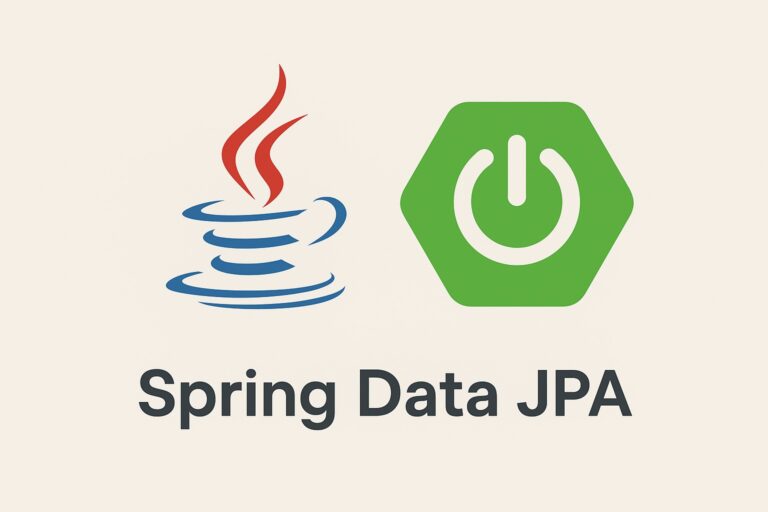Spring Data JPA provides powerful annotations like @Modifying and @Transactional to perform update and delete operations efficiently. These annotations allow modifying queries in a structured and transactional manner.
Understanding @Modifying and @Transactional
@Modifying
The @Modifying annotation is used in conjunction with @Query to indicate that a query modifies the database (i.e., update, delete, or insert operations). It signals that the method does not return an entity but instead affects the database state.
@Transactional
The @Transactional annotation is used to ensure that database operations occur within a transaction. It helps maintain data consistency and rollback changes in case of errors.
Example: Using @Modifying and @Transactional
Step 1: Add Dependencies
Ensure you have the necessary dependencies in your pom.xml:
<dependency>
<groupId>org.springframework.boot</groupId>
<artifactId>spring-boot-starter-data-jpa</artifactId>
</dependency>
<dependency>
<groupId>org.springframework.boot</groupId>
<artifactId>spring-boot-starter-web</artifactId>
</dependency>
<dependency>
<groupId>com.h2database</groupId>
<artifactId>h2</artifactId>
<scope>runtime</scope>
</dependency>
Step 2: Define the Entity
Create an entity class to map to the database table.
import jakarta.persistence.*;
@Entity
@Table(name = "employees")
public class Employee {
@Id
@GeneratedValue(strategy = GenerationType.IDENTITY)
private Long id;
private String name;
private String department;
private double salary;
// Getters and Setters
}
Step 3: Define the Repository
Use @Modifying and @Transactional annotations to create update and delete operations.
import org.springframework.data.jpa.repository.JpaRepository;
import org.springframework.data.jpa.repository.Modifying;
import org.springframework.data.jpa.repository.Query;
import org.springframework.data.repository.query.Param;
import org.springframework.stereotype.Repository;
import org.springframework.transaction.annotation.Transactional;
@Repository
public interface EmployeeRepository extends JpaRepository<Employee, Long> {
@Modifying
@Transactional
@Query("UPDATE Employee e SET e.salary = :salary WHERE e.id = :id")
int updateEmployeeSalary(@Param("id") Long id, @Param("salary") double salary);
@Modifying
@Transactional
@Query("DELETE FROM Employee e WHERE e.id = :id")
int deleteEmployeeById(@Param("id") Long id);
}
Step 4: Implement the Service Layer
The service layer calls the repository methods and ensures transactional behavior.
import org.springframework.stereotype.Service;
import java.util.Optional;
@Service
public class EmployeeService {
private final EmployeeRepository employeeRepository;
public EmployeeService(EmployeeRepository employeeRepository) {
this.employeeRepository = employeeRepository;
}
public int updateSalary(Long id, double salary) {
return employeeRepository.updateEmployeeSalary(id, salary);
}
public int deleteEmployee(Long id) {
return employeeRepository.deleteEmployeeById(id);
}
}
Step 5: Create the REST Controller
Expose the update and delete methods through REST endpoints.
import org.springframework.web.bind.annotation.*;
@RestController
@RequestMapping("/employees")
public class EmployeeController {
private final EmployeeService employeeService;
public EmployeeController(EmployeeService employeeService) {
this.employeeService = employeeService;
}
@PutMapping("/updateSalary/{id}/{salary}")
public int updateSalary(@PathVariable Long id, @PathVariable double salary) {
return employeeService.updateSalary(id, salary);
}
@DeleteMapping("/delete/{id}")
public int deleteEmployee(@PathVariable Long id) {
return employeeService.deleteEmployee(id);
}
}
Testing the Application
Run the application and test the API calls:
- Update Employee Salary
PUT /employees/updateSalary/1/75000 - Delete Employee by ID
DELETE /employees/delete/1
Conclusion
The @Modifying annotation in Spring JPA allows executing update and delete queries efficiently. Pairing it with @Transactional ensures that operations are executed safely within a transaction, maintaining data integrity. By following this approach, developers can seamlessly integrate database modification operations into their Spring Boot applications.



